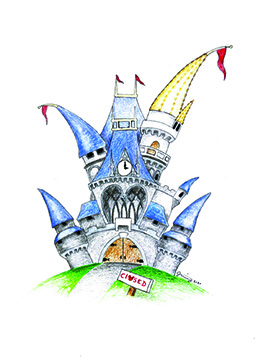John Willoughby
reporter2@greenepublishing.com
When you hear the word "cartoons," what do you think of? Do you flashback to when animator Ralph Bakshi brought to life your friendly neighborhood Spiderman in the 70s? Maybe the younger generation considers their favorite Nickelodeon or Disney Channel toon over the famed Calvin and Hobbes strip. Despite what we've seen on television or in the comic books we buy at the store, cartooning has long since been a figure of art found in newspapers and other publications around the world.
A familiar American patriot and artist himself was credited with the first published editorial cartoon – political in nature – over 250 years ago. On May 9, 1754, philosopher/diplomat Benjamin Franklin inserted the earliest known pictorial, titled "Join, or Die" into his self-owned Philadelphia newspaper, the now-defunct Pennsylvania Gazette. The drawing, which featured an eight-piece divided snake (each segment showing one of the American colonies) depicted the state of the British Colonies at the time of the publication.
At the time of the publication, a myth had widely circulated detailing the thought that a severed snake would come back to life if the pieces were put together before sunset. The snake later become an American Revolutionary War symbol of colonial freedom just 21 years later.
Over a century later, cartoonist Richard Outcault published "The Yellow Kid," in the New York World publication. The website, www.thoughtco.com, describes the strip as the first to use speech bubbles and panels to create narratives. Soon, a newspaper revolution came to be as the New York Evening Journal dedicated a whole page to strips and panels.
As the past progressed into today's present, newspapers nationwide have believed in artists giving birth to famous satire pieces such as Charlie Brown and Peanuts (1950) and America's favorite cat, Garfield (1978); the orange feline continues to be published in newspapers and adapted into books and movies.
Editorial cartoons are a staple in large newspapers, locally published out of the USA Today Network. Today, editorials mainly focus on political and social issues, and others make bold statements bringing attention to the current state of America, foreign relations or elections.

